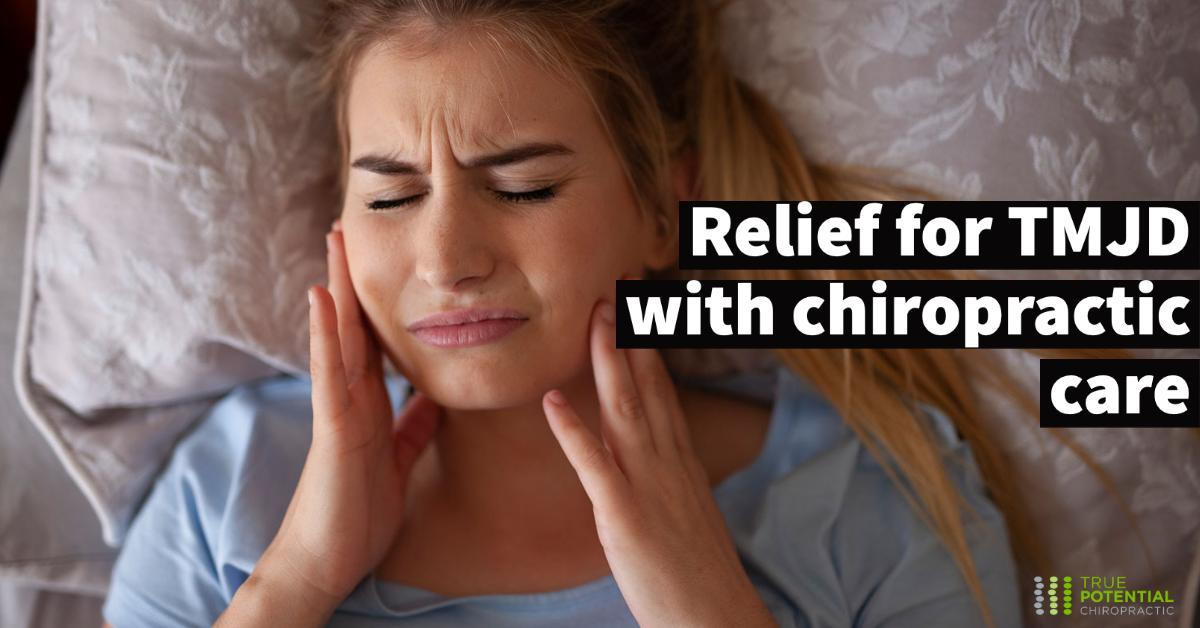
Temporomandibular joint (TMJ) disorder, also known as TMJ disorder or TMJD, is a condition that affects the jaw joint and the muscles that control jaw movement. Your TMJ connects the lower jaw bone (mandible) to the skull's temporal bone. TMJD can cause pain and discomfort in the jaw joint and surrounding muscles. The exact causes of TMJD are unknown, but it can result from injury to the jaw, arthritis, teeth grinding or clenching, stress, and other factors.
Symptoms TMJD
- TMJD can cause a range of symptoms. Some of the most common symptoms include:
- Pain or discomfort in the jaw joint area, often in front of the ears, that may radiate to the neck and shoulders
- Clicking, popping, or grinding sounds when opening or closing the mouth.
- Difficulty or discomfort when chewing, speaking, or opening the mouth wide
- Aching pain in or around the ear
- Headaches, particularly in the temples or at the back of the head.
- Locking of the jaw joint, which can make it difficult to open or close the mouth
- Swelling on the side of the face
- A tired feeling in the face or muscles of the jaw
Causes of TMJD
The exact cause of TMJD has yet to be fully understood. Still, it may be a combination of several factors, including:
- Trauma to the jaw joint or muscles due to an injury, such as a blow to the face or a car accident damages the jaw joint or muscles
- Grinding or clenching teeth, known as bruxism, puts excessive pressure on the jaw joint and muscles
- Arthritis in the jaw joint can cause inflammation and damage to the joint
- A misaligned bite can cause stress on the jaw joint and muscles
- Emotional stress can lead to muscle tension in the jaw and contribute to TMJD
- It is also possible that TMJD may have multiple causes and may develop due to a combination of factors.
Common treatments for TMJD
The treatment for TMJD may depend on the cause and severity of the condition, but some common treatments include:
- Self-care: Simple self-care techniques like ice packs, heat packs, and gentle jaw exercises may help relieve TMJD symptoms.
- Medications: Pain relievers, muscle relaxants, and anti-inflammatory drugs may alleviate pain and inflammation associated with TMJD.
- Oral appliances: Oral appliances such as splints, mouthguards, and bite plates can help reduce the strain on the jaw and prevent teeth grinding or clenching.
- Physical therapy: Physical therapy may include jaw exercises, massage, and stretching techniques to relieve TMJD symptoms.
- Alternative therapies include acupuncture and chiropractic care.
- Cognitive-behavioral therapy can help manage the stress and anxiety contributing to TMJD.
- Surgery: In severe cases, surgery may be necessary to repair or replace the damaged joint.
- Often, TMJD is caused or exacerbated by certain lifestyle factors such as stress, poor posture, or clenching/grinding of teeth. Changing your lifestyle, such as practicing stress-reduction techniques, improving posture, and wearing a mouthguard, can help alleviate symptoms.
Surgery is typically considered a last resort after other treatments have been tried and failed.
Pain medications, including anti-inflammatories, are most frequently prescribed, but these often come with undesirable side effects.
Some of the potential adverse side effects associated with these medications include:
- Stomach problems including an increased risk of stomach and intestinal damage.
- Cardiovascular problems leading to an increased risk of heart attack, stroke, and more.
- Kidney damage, particularly in people with pre-existing kidney conditions.
- Severe and even life-threatening allergic reactions.
- Risk of dangerous drug interactions with other medications.
Relief from TMJD through chiropractic care
Chiropractic care can help TMJD by addressing the underlying causes of the condition and providing relief from the symptoms, helping to avoid the long-term use of pain medications or other more extreme treatments.
Chiropractors use various techniques to help TMJD patients, including manual jaw joint and surrounding muscles adjustments, soft tissue therapies, and exercises to improve range of motion and strength. The goal of chiropractic care for TMJD is to restore proper alignment and movement to the jaw joint and surrounding structures, which can reduce pain, improve function, and prevent further damage.
In addition to manual therapies, chiropractors may recommend lifestyle changes to help manage TMJD symptoms. This can include dietary modifications to reduce inflammation, stress reduction techniques, and ergonomic changes to reduce strain on the jaw joint.
If you're experiencing symptoms of TMJD, consulting with a chiropractic professional can help you find a non-medical, non-invasive solution to alleviate pain.
Call True Potential today to start your road to recovery – naturally! (503) 574-4872

